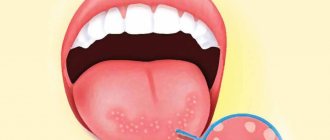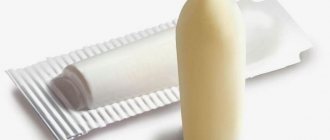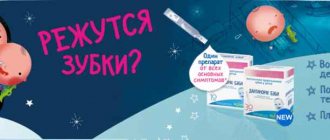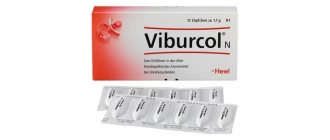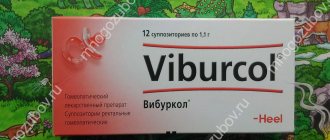According to statistical data, viral respiratory diseases are most often observed in children of preschool and primary school age [1, 2, 3, 4]. After all, it is during this period that children expand their contacts with the outside world and are inevitably exposed to the risk of viral infections, which are often accompanied by fever, rhinitis, tonsillitis, otitis, bronchitis, etc. [1, 2, 3, 4]. In addition, children are often bothered by discomfort and cramps in the abdomen, intestinal colic, difficulty falling asleep, and nervous agitation.
In such situations, you need to be extremely careful and not miss a “threatening” symptom. After all, insignificant at first glance, it may turn out to be the beginning of the development of a disease or cause complications [5].
It would be appropriate for the pharmacist to draw the mother’s attention to the fact that there are situations when the child should not be treated independently and it is necessary to seek advice from a doctor. For example, when a child’s body temperature is above 39 °C or fever is accompanied by severe pain, shortness of breath, convulsions, confusion, or, despite the fever, the baby has cold extremities, etc. [5].
If there is no reason to urgently call a doctor, it is important to recommend a drug that simultaneously has a broad spectrum of action and a favorable safety profile. In addition, as practice shows, for many mothers it is of great importance that medicines for their children are based on ingredients of natural origin.
In this context, the German drug VIBURCOL attracts attention.
VIBURCOL is a complex preparation that contains components of natural origin. It is available in the form of suppositories [6], which is very convenient for use in young children, especially if the disease is accompanied by vomiting or the child refuses to take the bitter pill.
The drug has a wide spectrum of action and is indicated for inflammatory diseases of various localizations, infections (including acute respiratory viral infections (ARVI), acute diseases of the upper respiratory tract, infectious and inflammatory diseases of internal organs), nervous excitement in children over 1 year of age [6].
VIBURCOL has an anti-inflammatory, analgesic and antispasmodic effect, alleviating the baby’s condition with inflammatory and infectious diseases [3, 6, 7, 8].
Thanks to its sedative effect, it helps reduce general anxiety and nervous excitement, and helps the child fall asleep and restful sleep during illness [2, 3, 6, 7, 8].
It has a detoxification effect, improving the general condition of the child in diseases that are accompanied by intoxication and elevated body temperature [2, 3, 6, 7].
VIBURCOL does not exhibit a direct antipyretic effect and does not cause a sharp decrease in body temperature, optimizing it to levels at which the immune system remains effective. Thus, the drug promotes the production of interferon in the body and activation of phagocytosis [2, 7].
It should be noted that the effectiveness of VIBURCOL in acute infectious diseases in children accompanied by fever was proven in a study of the highest level of evidence conducted in Germany (a multicenter prospective controlled randomized trial) [9]. VIBURCOL is comparable in effectiveness to paracetamol, and has a favorable safety profile, rarely causing allergic reactions [2, 6, 9].
Thanks to harmoniously selected components, effectiveness and safety, the drug VIBURCOL rightfully takes its rightful place among medicines intended for the treatment of common diseases in childhood [2, 4, 7, 8, 9].
Teething
A child's first teeth appear around 6–9 months of age in the first year of life. But the individual characteristics of the body can adjust this schedule, and milk teeth will break through the gums at an earlier period or will begin to bother the baby only closer to the age of one. Do not be alarmed by such changes; the delay in the appearance of teeth is not a pathology. The first tooth is considered the most painful and difficult, but it happens that its appearance may go unnoticed; parents will discover it only at the moment when it begins to knock on the spoon when feeding.
Fever
If the baby’s body temperature has risen, he behaves restlessly and the mother is sure that this is due to teething, then it is worth taking the following actions:
- to make sure there is a connection between tooth eruption and the painful condition, they invite a doctor who will accurately determine the cause of the ailment;
- stop worrying, gain patience and monitor the child’s condition; sometimes the temperature to 38º should not be reduced at all in order to give the body an excellent opportunity to fight the malaise on its own;
- when the temperature rises, the protective substance interferon begins to be produced in the body, and microbes and viruses lose their vital functions due to this, so it is better to be patient and not cool the body;
- since the child’s nervous system needs a night’s rest, the temperature should be lowered in the evening before bed;
- If, while monitoring the baby’s condition, the mother notices convulsions and spasms, then the high temperature should be brought down immediately, for this purpose viburkol is used.
Main causes of illness
The process of the appearance of the first and subsequent teeth is not an easy test for parents , since the baby behaves unusually restlessly, cries, often wakes up at night and reacts sharply to the uncomfortable condition of the gums:
- the whims of a small person are a sign of a very unusual condition for him, when a tooth cuts through the gum, and at the same time, strong heat, itching and unpleasant pain are felt at the site of the wound;
- the risk of infectious diseases and colds increases, since inflammatory processes in the oral cavity reduce the baby’s immunity;
- in the place where a wound appears on the gum, the body produces a large amount of saliva with bactericidal properties, which inhibits inflammation;
- bowel dysfunction, the appearance of dyspepsia may be associated with the penetration of infection through the oral cavity, where the child takes any objects that come across, fingers, in order to instinctively reduce pain symptoms and relieve itching;
- Itchy gums lead to loss of appetite; saliva produced irritates the skin of the cheek, neck and beard.
Viburkol drug
It is a homeopathic remedy with a successfully selected complex of constituent substances. The medicine has an antispasmodic, anti-inflammatory, sedative effect, and prevents the occurrence of convulsions. Its action is based on launching protection to restore the impaired functions of the small organism. The components of the drug are selected in such a way that they do not have a destructive effect on the baby’s kidneys and liver.
Viburkol reduces intoxication, and the acute painful stage passes more smoothly, a decrease in temperature leads to a decrease in the painful condition. The German-made drug is available in the form of rectal suppositories for use in the treatment of children with many diseases, one of such cases is teething. This form of release of viburkol is very convenient for treating young children, as they react painfully to swallowing tablets or refuse them altogether.
Instructions for use of the drug
As for treatment directly with Viburkol, we are not talking about complex measures; the difference most often concerns the dosage, which depends on the age of the baby and the change in the number of candles installed per day:
- up to six months, use a suppository to reduce temperature no more than 2 times a day during the treatment of a respiratory infection and for prevention no more than 1 time;
- children older than six months, when treating an infectious disease, increase the number of suppositories per day up to 6 times a day, a lighter state reduces this number to four;
- if the child is more than six months old, and the disease is in the initial stage, then it is enough to put only two rectal suppositories per day;
- during the period of relief after illness, it is recommended to use two suppositories after six months, and at an earlier age one dose of the drug is sufficient;
- To alleviate the condition during teething, 1 candle is placed on a newborn baby and after six months it is used 2 times a day.
Natural components of the medicine
Since the product belongs to the group of homeopathic drugs, it contains natural ingredients:
- chamomile relieves pain during teething, relieves inflammation, and has a sedative effect;
- bittersweet nightshade prevents febrile infections from developing;
- plantain has a beneficial effect on the functioning of the intestines and genitourinary system, which is important in conditions of their improper functioning;
- belladonna relieves inflammation in the respiratory tract, and also treats tonsils;
- meadow lumbago has a positive effect on the functioning of the upper respiratory tract, intestines and stomach, extinguishes nervous mental disorders;
- a substance produced from oyster shells and called Hahnemann's calcium carbonate, has a calming effect and increases protection against colds.
The most pressing problem in Russia is pharmacotherapy in pediatric practice. Today, medications are widely used that are either not officially approved for use in children (unlicensed), or are not used in accordance with the instructions for use of the drug (off label), or a large number of medications are used at the same time (polypharmacy), especially those that do not have proven effectiveness. in children. Unregulated prescriptions often account for about 10% when treating a child in an outpatient setting. More than a third of adverse drug side effects occurring in pediatrics are caused by unlicensed or off-label prescriptions [1].
Over-the-counter dispensing of such groups of drugs as non-steroidal anti-inflammatory drugs (NSAIDs) and antibiotics leads to an increase in side effects in children (data from a systematic review of RMD RM Smyth et al., 2012) [2].
The peculiarities of prescribing drugs in children are due to the different pharmacokinetics of drugs, ranging from the absorption of the active substance in the child’s gastrointestinal tract, the connection with proteins due to a different composition of protein fractions, and ending with the immaturity of the child’s excretory system [3].
Thus, unregulated pharmacotherapy is often accompanied by an increased risk of complications and can lead to prolongation of the underlying disease.
The problem of off-label prescriptions is most clearly presented in the treatment of acute respiratory diseases, spastic conditions, and pain syndromes, since to alleviate the suffering of a child, higher doses, different frequency of prescriptions, combinations with other NSAIDs not approved for use in children, and additional prescription of such drugs are often used. drugs such as antihistamines, myotropic, immunomodulatory, sedatives, on the one hand, capable of quickly and effectively stopping almost any symptom, on the other hand, blocking and inhibiting the physiological course of biologically expedient processes of self-regulation of the body.
For example, the use of NSAIDs leads to inhibition of the inflammatory process, which disrupts its physiological course and makes it difficult to fully complete it. Therefore, long-term use of NSAIDs during acute and subacute course of the disease can contribute to chronicity of the process, as well as the development of various complications.
Today, naturopathic treatment is becoming increasingly popular in the world. In European countries, especially Germany, homeopathic remedies have been officially prescribed by traditional practitioners for more than 80 years [4].
The drug Viburkol (Biologische Heilmittel Heel GmbH, Heel) is widely used for diseases in children by both foreign and domestic doctors [5, 6, 8–19, 20]. Viburkol belongs to antihomotoxic drugs, the action of which is based on the complementary principle and stimulation of the body’s own forces. Antihomotoxic drugs are made from natural products in minimal dosages, they are prescribed on the basis of a clinical diagnosis, the complex composition allows them to be used according to indications, making the drugs available for use by doctors who do not have special homeopathic training.
To reduce the use of high doses of NSAIDs and the prescription of several drugs with questionable effectiveness, it is possible to use low-dose complex antihomotoxic drugs in children. For example, the drug Viburkol has certain advantages: firstly, it provides a quick and pronounced effect comparable to NSAIDs; secondly, it has minimal side effects; thirdly, it has a convenient registered dosage form for children and is used from the age of one year; compatible with other complex biological and allopathic drugs, when used together with which their side effects are minimized. At the same time, Viburcol has a favorable safety and tolerability profile [5, 6, 7–16].
Currently, in Russia, the drug Viburkol is registered in the form of a pediatric form “Homeopathic rectal suppositories” (see table). It consists of six components (five plant and one mineral), which, thanks to a special stepwise homeopathic manufacturing technology, are contained in the preparation in ultra-low doses. It is thanks to its composition that Viburkol is well tolerated by children and, unlike traditional allopathic drugs, helps restore self-regulation processes in the body, activate detoxification processes and normalize impaired functions [5, 6, 7–19]. Chamomilla recutita (officinalis chamomile), which is part of the drug, increases the threshold for pain perception and restores autonomic regulation in the body. It is used for nervous excitement in children due to fever, teething, and intestinal colic. Chamomile is effective for pain in children associated with hypersensitivity and physiological immaturity of the nervous system. Belladonna (belladonna) enhances the effect of Chamomilla recutita and is a basic component for the treatment of pain in children. Dulcamara (bittersweet nightshade) provides a tranquilizing effect. Plantago major (large plantain) has a sedative effect. Pulsatilla (anemone) normalizes hormonal balance and is also one of the most effective homeopathic ingredients for pain relief. Calcium carbonicum has a pronounced analgesic effect [5–7].
Thanks to these components, Viburkol has a complex effect: analgesic, antispasmodic, sedative, anti-inflammatory. A special feature of the drug is that its use in diseases with fever is not accompanied by a sharp decrease in body temperature, the drug does not affect the metabolism of arachidonic acid. This is due to the fact that its complex action is based on the activation of the body’s defense mechanisms and contributes to a biologically expedient reduction in elevated body temperature, maintaining it at an optimal level that preserves the effective functioning of the immune system: interferon synthesis, activation of phagocytosis [6–8].
Thanks to this complex action, the indications for use of Viburkol cover a wide range of diseases and conditions in children. These are inflammatory processes with pain during teething, otitis [5], infectious diseases (acute respiratory viral infections - ARVI, influenza), acute diseases of the upper respiratory tract, childhood infectious diseases (chicken pox, measles, rubella) accompanied by fever [5, 12–15], spastic conditions (intestinal colic) [15], nervous agitation, anxiety against the background of elevated body temperature [6, 10, 15, 16, 18, 20], as well as prevention of convulsive readiness against the background of increased body temperature.
However, it must be remembered that in Russia this drug is registered only “as part of complex therapy (as an antipyretic and anti-inflammatory agent) in the treatment of respiratory diseases in children, as well as for the relief of clinical manifestations during the eruption of baby teeth” [21].
Dosage regimen recommended by the instructions: for ARVI and painful symptoms of eruption of baby teeth, children under 6 months, 1 suppository 2 times a day, children over 6 months with a body temperature above 37.5 ° C, 1 suppository 4 times a day, with a body temperature above 38°C 1 suppository up to 6 times a day. When body temperature normalizes, take 1 suppository 1–2 times a day for another 3–4 days [21].
The effectiveness and good tolerability of Viburkol for the above diseases and conditions have been studied and confirmed by a number of scientific and clinical studies since the 1980s. The results of a study of the drug Viburkol were first published in 1986. Treatment was carried out in a group of 44 children under the age of 2 years who suffered from an uncomplicated viral upper respiratory tract infection.
The study noted the effectiveness of the therapy; no side effects were observed [22].
A study of Viburkol suppositories was also conducted in 3009 children under 1 year of age who suffered from acute respiratory diseases (2173 children), restlessness due to fever (341 children), abdominal cramps (127 children), pain (291 children) and other symptoms (77 children). During treatment, the drug was prescribed in the form of suppositories 2-3 times a day to 71.3% of patients. With the therapy, recovery occurred in less than a week in 56.5% of patients. In the cohort of sick children, 82.7% of patients rated the effect as “very good” or “good.” Only 4.6% of children showed no improvement, and 0.5% experienced deterioration. Of the side effects, 9 cases of diarrhea were described, 2 patients noted pain when administering the suppository [23].
A study of Viburkol was also conducted for general anxiety against the background of fever, acute respiratory diseases and teething in 30 children. A positive effect was achieved in 25 children. No side effects were recorded [24].
German specialists B. Müller-Krampe, R. Gottwald, M. Weiser in 2002 conducted a multicenter prospective controlled cohort study in which they compared the effectiveness and tolerability of Viburkol and paracetamol in the symptomatic treatment of acute febrile conditions in children.
The study included 767 patients; the main group (361) took Viburkol, the control group (406) took paracetamol. The danger of using paracetamol is associated with the narrow range between therapeutic and toxic doses. Due to the over-the-counter status of paracetamol, there is a high risk of overdose during self-medication, which can cause severe side effects. Therefore, Viburkol was chosen for comparison as a drug that helps eliminate specific symptoms without pronounced toxic effects. The criteria for effectiveness and tolerability were body temperature, feeling sick, severity of fever, severity of clinical symptoms (spasms caused by infection and temperature, general anxiety and sleep disturbance, screaming/crying, difficulty eating/drinking, time of improvement of feverish symptoms), overall treatment outcome, side effects and overall assessment of tolerability. As a result of treatment, a marked improvement in clinical parameters was observed in both groups. The following conclusions were drawn: Viburkol is a reliable, effective and safe drug for the symptomatic treatment of diseases accompanied by fever in children. At the same time, it has a therapeutic potential comparable to paracetamol and its use does not pose the risk of developing side effects characteristic of paracetamol [15].
In 2005, Belgian clinicians led by M. Derasse compared the effectiveness and tolerability of the drug Viburcol with paracetamol in febrile conditions [16].
The study involved 208 children (under 11 years of age) from 38 medical centers in Belgium. The main group (107) of patients took Viburcol for rhinitis, otitis, bronchitis and tonsillitis [16]. It was concluded that Viburkol is well tolerated and is not inferior in effectiveness to paracetamol. Doctors and parents were more likely to rate Viburcol "excellent" (93%) than acetaminophen (80%). The study showed that for clinicians and parents concerned about the possible risks of treatment, Viburkol is an effective, well-tolerated alternative to paracetamol in the symptomatic treatment of children with acute infection accompanied by fever [16].
In conclusion, I would like to note that Viburkol is an effective registered drug that has undergone clinical trials not only in Russia, but also abroad, with a well-studied tolerability and safety profile. The use of Viburkol in addition to standard therapy for acute respiratory infections accompanied by fever, pain associated with teething or respiratory infection leads to a reduction in the risk of developing side effects as a result of taking NSAIDs, reduces the number of drugs used simultaneously, and reduces the likelihood of using off-label drugs.
Indications for treatment with viburcol
Therapy with the homeopathic drug Viburkol is used in cases of fever during the period of the appearance of the first and subsequent teeth.
As one of the components of complex treatment, the medicine is used for ARVI infection of the body, the appearance of seizures of unknown etiology, inflammation of the urinary system and intestines, to reduce nervous tension and overexcitation. In some cases, teething coincides with the appearance of individual diseases of this type, sometimes, on the contrary, it provokes symptoms of the above diseases. Modern children often react to chemicals with allergic reactions, so the use of viburkol becomes a real panacea.
Features of the drug use
Viburcol should be used in the evening, before bedtime or in the morning, until the child begins to be actively awake. This is explained by the fact that for the best absorption of the medicine from the intestines, the baby needs to be in a supine position for some time. If you don’t do this, some of the medicine liquefied by the heat will leak out.
Absorption of a substance in the intestine is always more effective than the action of the same component when it enters the stomach and then into the blood, therefore the effect manifests itself faster. Viburkol is often prescribed to children after one year, one suppository once or twice a day , since the painful condition is very individual and sometimes manifests itself at an older age.
Compound
| Homeopathic rectal suppositories | 1 sup. |
| active components: | |
| Chamomilla recutita (Chamomilla) (Chamomilla recutita (Chamomilla) D1 | 1.1 mg |
| Atropa bella-donna (Belladonna) D2 | 1.1 mg |
| Solanum dulcamara (Dulcamara) D4 | 1.1 mg |
| Plantago major (Plantago) (plantago major (plantago) D3 | 1.1 mg |
| Pulsatilla pratensis (Pulsatilla) (Pulsatilla pratensis (Pulsatilla) D2 | 2.2 mg |
| Calcium carbonicum Hahnemanni (Conchae) D8 | 4.4 mg |
| auxiliary component: solid fat (Adeps solidus) - 1089 mg, to obtain a suppository weighing 1.1 g |

